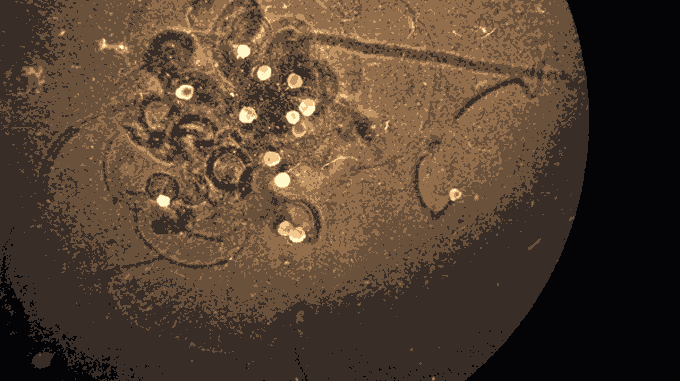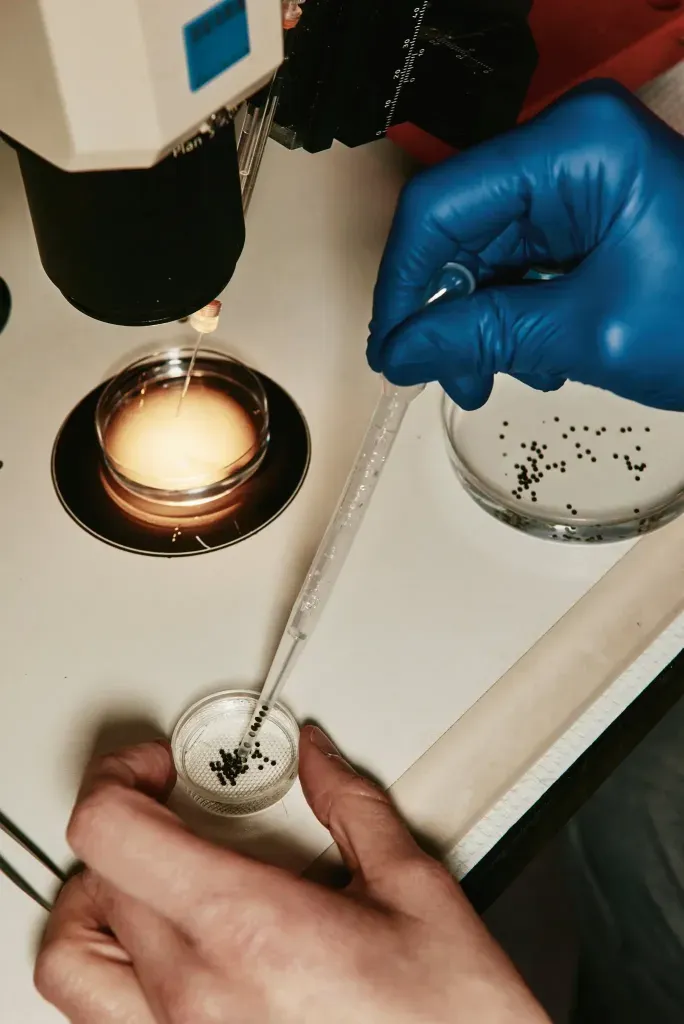LIVING ROBOTS

Living Robots were born in a lab somewhere in America around two years ago. The same time that we were all forced to lock down and not leave our homes, so I guess this moment was somewhat overshadowed at the time. If you’ve not already heard, scientists created these living robots, it wasn’t all completely thought out. The idea was to manipulate real life cells to do what they wanted, like a robot but not. They waited and watched to see what would happen. Their experiment revealed more than they’d hoped for.
Before we go further we have to start from the beginning. Scientists developed the stem cells of the african clawed frog (Xenopus laevis) at the University of Vermont, Tufts University and Harvard University’s Wyss Institute for Biologically Inspired Engineering. Through this they discovered the cells were capable of an entirely new form of biological reproduction different from any animal or plant known to science. The little blobs, when left on their own, began doing their own thing and acting autonomously. This was totally different to if the cells were part of the frog. This is where the term living robots come from, they are also referred to as xenobots.


It’s all very sci-fi but those in the field of biotech say it could be a real game changer in the future of health. For now this discovery is still in the very early stages. Scientists were shocked that when these stem cells were removed from a body, they even moved differently, could reproduce on their own and self heal. These things can be compared to very tiny insects, they move around a lot and if you flip them on their back they turn back around and continue moving. According to researchers this is an entirely new kind of life form and nothing is yet known about its full capabilities.
“People have thought for quite a long time that we’ve worked out all the ways that life can reproduce or replicate,” said study co-author Douglas Blackiston, the senior scientist at Tufts University, in a statement. “But this is something that’s never been observed before.”
Scientists were now aware that xenobots could replicate but this didn’t happen easily. There were many conditions that had to be met in order for the organism to be able to replicate itself, one was the kind of shape it was. The blobs were producing pretty inconsistent results. In order to achieve the perfect conditions, the help of AI was enlisted as researchers put millions of different body shapes through an evolutionary algorithm on a supercomputer to figure out which was the perfect shape for the xenobots to achieve optimal productivity.
Can we put different apocalyptic scenarios through this supercomputer to see which is most likely? It’s completely unrelated but the AI definitely knows because it managed to give researchers the information they needed. The perfect shape for the xenobots to replicate, the shape is almost identical to pacman. This time, life imitates art. After forging this new shape, researchers put the xenobots in a petri dish with some stem cells floating around. They found that with this new c-shape, the xenobots were even more efficient. They outlived the original xenobots which were only alive for about 7-10 days. They could propel themselves, travel in a straight line, or just move in circles.

The organisms were instantly able to find any stem cell no matter how tiny and engulf hundreds of them inside its mouth just like the pacman game. Days later those stem cells gathered would become brand new xenobots.
The future is bright but there are not yet any plans for the little bots, just more observation and experimentation. The plan is to use these organisms to carry out tasks in the body and the environment, this could include collecting microplastics from the very depths of the oceans and looking into regenerative medicine. It all seems to be quite promising.
People have understandably been dubious about the xenobots. They’re replicating, self healing and have the capability of following their own initiative. It is a scary thought indeed when letting the mind run wild with possibilities. Researchers however, have tried to dampen concerns stating that the living robots were entirely contained in a lab and being regulated by the likes of ethics experts in light of the organisms abilities. University of Melbourne digital ethics researcher Kobi Leins believes new ethical issues arise with the creation of new forms of life and she spoke with Science News about it in 2021. “Scientists like to make things, and don’t necessarily think about what the repercussions are,” she told
(For what it’s worth, Levin agrees, telling Science News the questions raised by the Xenobots are like “finding a whole galaxy of weird new things.”)
Amongst the excitement and prospect, there is one Sci-Fi horror plot that hasn’t been considered. Or maybe these concerns are being stifled in the biotech community.

Emergent behaviour.
When a heap of vastly connected cells such as xenobots are stacked together some odd things happen. For example, when looking at humans each individual cell on its own could not achieve the daily functions that are necessary to our body’s survival. Each cell itself has no sentience nor is it aware of the other cells around it.
When all the cells in our body team up though, these complex tasks are possible. All our cells combined create a conscious body, a conscious being.
Using humans as an example, when many, many cells are bunched together it becomes one entity and can gain awareness of itself. This is emergent behaviour in a nutshell.
The first batch of xenobots were created from around 2000 cells. A modest amount. If their use does become important to us in the future we could be creating living robots made up of about 10 or 100 times that amount. Many scientists believe emergent behaviour is very likely in this scenario. The xenobots could change a path they have been programmed to take and decide to go on their own path, just because they can.They could turn back to where they came from and not even complete a task or they could communicate with other xenobots and work together on their own task. They could technically have some form of sentience, allowing them to think on their own and possibly develop a consciousness. What happens when xenobots start communicating with each other and humans are no longer able to figure out what is going on? What if their communication, behaviour and actions become more and more complex? If they did achieve a level of sentience would they then have the possibility to go rogue and if so, what would be the implications of this if xenobots are going to be such an integral part of our society in the future.
Well we don’t know yet and neither do researchers…or do they?
Comments ()